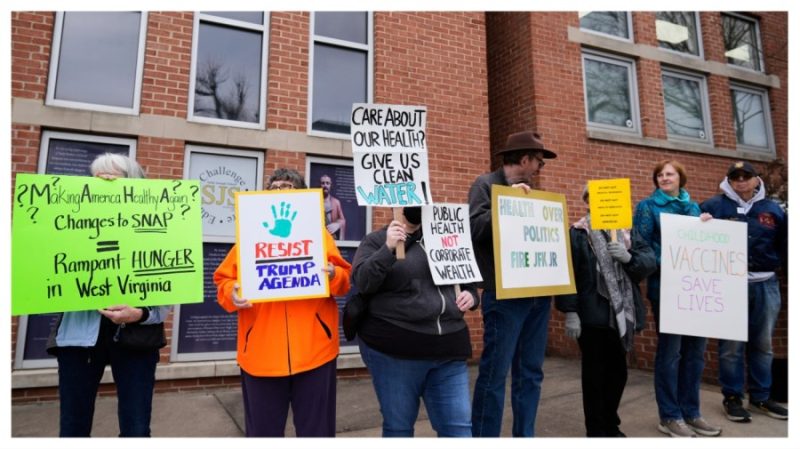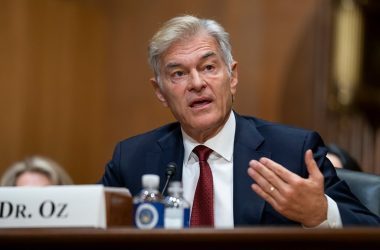Thousands of employees across the vast Department of Health and Human Services (HHS) began receiving layoff notices as early as 5 a.m. on Tuesday.
The purge comes on the heels of HHS Secretary Robert F. Kennedy Jr. forcing out a top vaccine official late last week. Entire divisions were axed across multiple agencies, including much of the Food and Drug Administration’s communications and media affairs staff.
In total, the layoffs are anticipated to impact as many as 10,000 staffers, part of the agency restructuring plan publicly announced late last week. The layoffs will touch every aspect of the agency.
According to some notices seen by The Hill, HHS Chief Human Capital Officer Tom Nagy stated the reduction in force (RIF) would go into effect on June 30.
Nagy wrote that employees would be “be ranked on a retention register based on tenure, veterans’ preference, length of service, and performance ratings.”
Some employees who received notices were told to contact Anita Pinder, former director of the Office of Equal Opportunity and Civil Rights, if they believed they were being discriminated against. Pinder died last year.
Everett Kelley, president of the American Federation of Government Employees (AFGE) union, called the mass layoffs at HHS “dangerous, irresponsible, and unacceptable.”
“Cutting 10,000 critical public health jobs puts every American at risk — weakening our defenses against disease outbreaks, unsafe medications, and contaminated food,” said Kelley. “Congress and citizens must join us in pushing back. Our health, safety, and security depend on a strong, fully staffed public health system.”
Here are four takeaways as President Trump’s sprawling cuts to the federal government descend on health agencies.
Sprawling cuts range from top officials to rank-and-file
The top officials overseeing new drug reviews and tobacco safety were all part of deep cuts to the Food and Drug Administration (FDA).
The head of the FDA’s tobacco center, Brian King, was placed on administrative leave. Dozens of employees in the center were also notified of their dismissals, and two entire offices were eliminated.
“Leadership has been kneecapped, and I think it’s going to be much more difficult for the center to do its job,” Mitch Zeller, the FDA’s former tobacco chief, told The Hill.
The agency had increased staffing recently because of complaints from the e-cigarette industry about an approvals backlog; those people are now gone, Zeller said.
Also out at the FDA: Peter Stein, director of the Office of New Drugs, who reportedly resigned rather than take a reassignment.
Jennifer Hoenig, director of the National Survey on Drug Use and Health (NSDUH), shared online she had received an RIF notice and warned that the data from the agency should no longer be relied on.
“This morning myself and the entire team of the Office of Population Surveys in SAMHSA, the team overseeing all of NSDUH, were RIF’d. My office, OPS, was staffed the by the brightest, most dedicated, and statistically savvy scientists who care deeply about improving the lives of Americans,” Hoenig said in a LinkedIn post.
“I don’t know who will continue on with this work, or if it will, as [Center for Behavioral Health Statistics and Quality] scientists were let go en masse.”
The Centers for Disease Control and Prevention cut senior infectious disease officials, as well as researchers working in the Division of HIV Prevention, the Substance Abuse and Mental Health Services Administration, and the National Center for Immunization and Respiratory Diseases.
The agency completely eliminated its Environmental Health Science division, according to agency staff who received layoff notices.
Jeopardizes US ‘gold standard’ on drug approval
Former FDA Commissioner Robert Califf declared Tuesday morning that “the FDA as we’ve known it is finished.”
“With most of the leaders with institutional knowledge and a deep understanding of product development and safety no longer employed. I believe that history will see this as a huge mistake,” Califf wrote on LinkedIn.
Kennedy’s plan called for FDA to lose about 3,500 employees, with the Centers for Disease Control losing about 2,400.
According to a former FDA official who spoke with The Hill, the staffing cuts at the agency will dethrone the U.S. as the “gold standard” on drug approvals.
“I think these changes, these layoffs, fundamentally change FDA and bring it back to what it was decades ago,” said Howard Sklamberg, former FDA deputy commissioner for global regulatory operations and policy.
“It’s likely true that these changes will put FDA below European regulatory agencies in terms of their expertise and in terms of their ability to oversee drug development.”
Brain drain concerns collide with MAHA agenda
Experts and former agency officials said the loss of talent and institutional knowledge will be profound.
“This is a tremendous amount of expertise that the agency is losing across all areas that it regulates,” said Patricia Zettler, a law professor at The Ohio State University College of Law who served as HHS Deputy General Counsel until January.
“It is unprecedented to have this kind of dramatic brain drain from FDA and HHS all at once,” Zettler added. “I don’t want to say things aren’t fixable. But, it’s hard to see any good outcomes here.”
Sklamberg noted that many of the staffers at the FDA who received RIFs appeared to be in policy offices.
“People may have thought, oh well policy means like legislation, and that’s duplicative of other parts of the government who would work with Congress and legislation. So, we can just cut that,” said Sklamberg. “FDA developed policy offices to provide guidance to companies that were going to make investments in developing drugs and medical devices, and a lot of those people have been fired.”
“The whole system of medical product applications depends on the expertise and staffing in policy offices,” he said.
Sklamberg argued the cuts also go directly against the aims of Kennedy’s “Make America Healthy Again” agenda, specifically its stated goal of providing healthier food to the U.S. population.
“The irony here is that a lot of the changes that HHS has talked about, the MAHA agenda, involves changes in a lot of food standards, which would be in regulations and guidances,” said Sklamberg. “Those regulations and guidances are written by policy staff.”
Lawmakers on both sides demand answers
Sen. Bill Cassidy (R-La.), the chair of the Senate’s health committee, asked Kennedy to testify about the reorganization plans before his panel on April 10.
Cassidy, who was highly conflicted but ultimately voted to confirm Kennedy, said the hearing would be a chance for Kennedy to “set the record straight” and lay out his goals and plans.
He said news coverage of the effort was “being set by anonymous sources, and opponents are setting the perceptions.”
Ahead of the layoff announcement, House and Senate Democrats questioned whether the reorganization effort was even legal and wrote to Kennedy demanding answers.
“Authoritatively stating that these drastic changes will improve the health of Americans without any explanation insults the American public and defies logic,” Sens. Patty Murray (D-Wash.) and Tammy Baldwin (D-Wis.) and Rep. Rosa DeLauro (D-Conn.) wrote in a letter to Kennedy on Monday.
“The stunning lack of transparency surrounding these changes leaves us deeply concerned about what the administration is hiding. Moreover, several actions taken or proposed by the Administration appear to violate federal law.”





